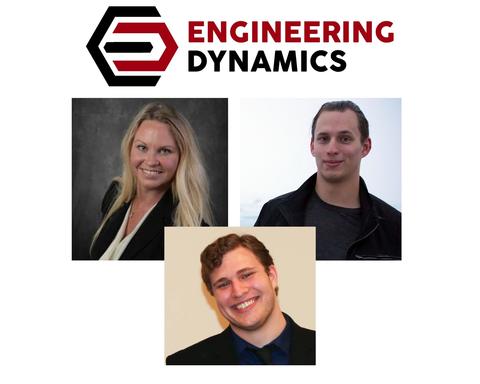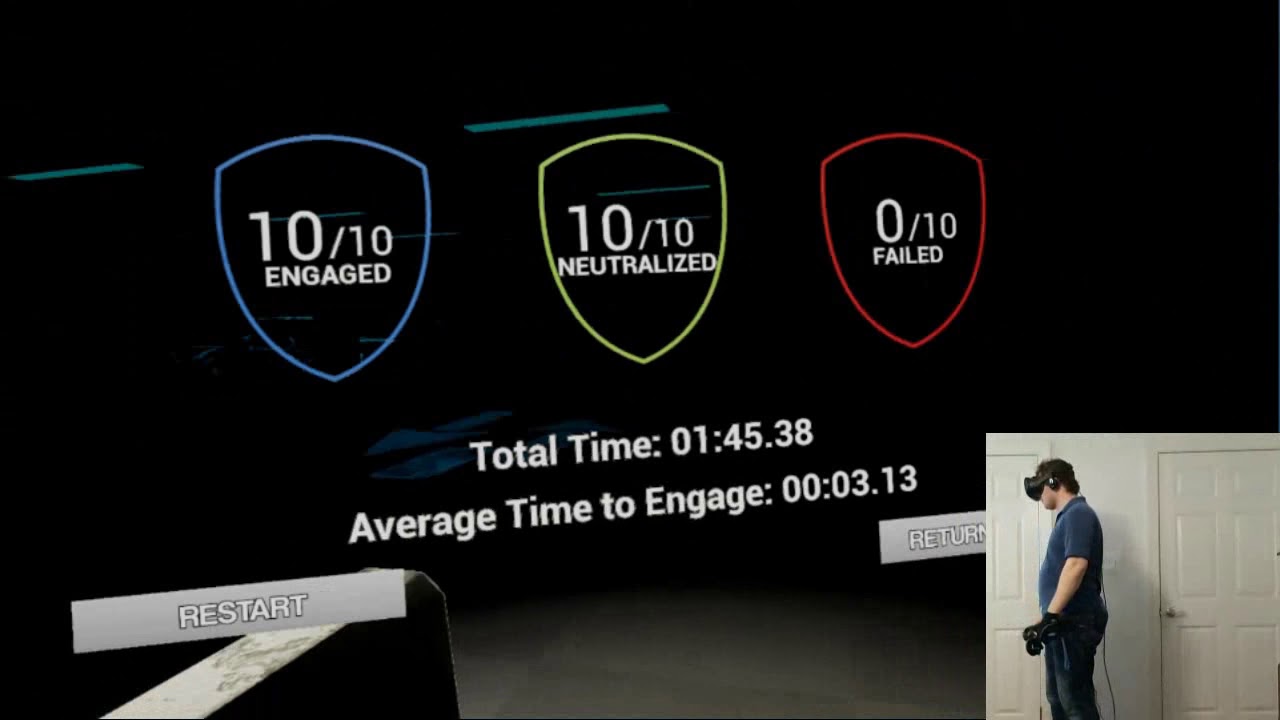Engineering Dynamics

Team Name
Engineering Dynamics
About the team
The Engineering Dynamics team combines a unique set of skills and experiences, which are well-suited to solving a technical problem of such critical importance. The team blends the complementary aspects of systems engineering and computer science to thoroughly understand the overall goals of the product, along with the constraints and complexities faced over the product's lifespan. System development utilizes both time-tested concepts (such as designing for sustainability) and a technologically advanced toolset to explore alternatives and create a mature product.
Key team members
Dave Kaniss, Systems Engineer
Dave is a senior systems engineer specializing in seamless integration and long-term sustainability. He has over 12 years of engineering experience, spanning the entire development lifecycle of complex systems-of-systems. Dave is well versed and demonstrated in providing safe, cost-effective, reliable, and highly usable products. He's passionate about photography and brings roughly 8 years of image capturing/editing experience to this challenge.
Tim Kaniss, Computer Scientist
Tim is a computer scientist with 7 years of experience in C/C++ programming, focused on modeling and simulation, embedded systems programming, and digital signal processing. He has extensive experience with sensor integration and real-time data processing. Previous computer vision projects include digitizing hand-drawn performance charts and correcting photographic distortion, developing augmented reality applications with hand pose estimation, and estimating human motion in extended videos.
Bethel Quick, Mechanical Engineer and Program Management
Bethel Quick provided program management support and use case development for their incident command dashboard. Bethel is a mechanical engineer specializing in the management of projects and people from a psychological perspective. She has over 10 years of psychology experience, 15 years experience in mechanical engineering, and 20 years experience in management. As a Marine Corps veteran, she is passionate about managing and improving tactical, operational, and strategic capabilities.
Julie Fennell, Ph.D.
Julie Fennell has over a decade of experience in sociological research and is skilled in both qualitative research and statistical analysis.
First Responder UAS Wireless Data Gatherer Challenge (UAS 6.0)
Total value of prizes received through the Wireless Data Gatherer Challenge: $160,000
Stage 1: $15,000
Stage 2: $30,000 (including the Best-in-Class: Endurance Award)
Stage 3: $115,000 (including Best-in-Class: Endurance, Best Most Affordable, Best Most Portable, and First Responders’ Choice Awards)
Key team members
Bethel Quick, Program Management; Tim Kaniss, Computer Scientist; and Dave Kaniss, Systems Engineer.
Solution
- The Engineering Dynamics system pairs an advanced, easy-to-fly drone with a custom communication system, delivering an extended RF range. Combined with AI-powered decision-making, our solution operates reliably in harsh terrain and demanding environmental conditions.
- AI-driven mission tools generate waypoints, autonomously execute missions, and detect optical targets, reducing setup and flight time.
- Performed comprehensive flight testing using standard aeronautic practices in varied environments, with temperatures ranging from 8°F to 82°F, to validate reliability and performance. Simulated real-world public safety scenarios to assess autonomous flight stability, sensor accuracy, obstacle avoidance, and RF performance under stress. Collected field data to refine AI navigation, optimize waypoint generation, and ensure consistent performance across diverse operating conditions.
- Conducted extensive RF engineering to optimize communication range in low-infrastructure, radio-dense environments. Tested various board configurations, antenna types, and layouts to assess trade-offs in cost, weight, performance, and deployment ease. Analyzed antenna polarization effects to reduce signal degradation from orientation mismatch, enhancing data link stability in dynamic flight conditions. Fine-tuned transmission parameters and hardware layout through iterative field testing to mitigate real-world obstacles and multipath interference.
- Built on the DJI Matrice 4E, an enterprise-grade drone optimized for geospatial missions, with a 48 MP camera, RTK GNSS precision (down to 1 cm), and up to 49 minutes of flight time. Weight 1219 g (2.69 lbs.), Max Altitude: 6000 m (19685.04 ft), Operating Temperature -10℃ to 40℃ (14°F to 104°F), Max Transmission Distance 25 km (15.53 mi), Max speed 21 m/s (47 mph), Max Flight Distance 35 km (21.7 mi), 16x zoom (112x hybrid).

CommanDING Tech Challenge
Total value of prizes received through the CommanDING Tech Challenge: $157,625.
Phase 1: $5,000
Phase 2: $33,000
Phase 3: $85,000
Phase 4: $34,625
Key team members
Bethel Quick, Program Management; Tim Kaniss, Computer Scientist; and Dave Kaniss, Systems Engineer.
Solution
Engineering Dynamics’ Mobile Automatic Path Wayfinding Incident Command Helper (MAPWICH) will provide situational awareness and decision-making by delivering high-resolution location-based data to Incident Command in an accessible manner without displaying an excessively distracting display. This project utilizes cutting-edge technology, including LIDAR, deployable sensors, Internet-of-Things (IoT) datalinks, and indoor positioning technology to create a functional dashboard for first responders. Their dashboard is not intended to supplant established incident command systems but to enhance them with the addition of enhanced situational awareness.
Key highlights
- Focused on simplicity and robustness, it was designed to be usable without formal training or prior experience with the tool
- Combines all location-based data into one unified display
- Collaborative tool for multiple commanders – all users engaged in the system have access to data for common perspective
- Quality-of-life features include data-smooth, bread-crumb trails and items/asset tracking
Mobile Fingerprinting Innovation Technology (mFIT) Challenge
Innovation Award Winner
Total value of prizes received through the mFIT Challenge: $12,500
Phase 1: $8,500
Phase 2: $4,000 Innovation Award
Key team members
Tim Kaniss, Computer Scientist; and Dave Kaniss, Systems Engineer.
Solution
This solution targets the technology gaps of accurately measuring distance, rending algorithm efficiency, and accessing available sensors. The team improved distance measurement through the use of laser time-of-flight sensors and stereo depth vision, allowing contactless fingerprint capture to be accurately and automatically resized to the target resolution, minimizing scaling errors. Stereo video streams are accessed via the relatively new Android Multi-Camera API, which supports portable third-party access to camera configurations using multiple physical cameras. Optical image stabilization eliminates small motions affecting the capture device, reducing image blur from using a handheld device. Dedicated sensor-processing hardware allows for efficient video processing and rendering of two high-resolution camera streams, supporting self-contained mobile processing.
Key highlights
- Incorporates the laser time-of-flight sensor to measure the distance to the finger.
- Stereo video streams are accessed via the relatively new Android Multi-Camera API.
- Optical image stabilization eliminates small motions affecting the capture device.
- Dedicated sensor-processing hardware allows for efficient video processing and rendering of two high-resolution camera streams, supporting self-contained mobile processing.
Haptic Interfaces for Public Safety Challenge
3rd place: $15,000
Total Prize Challenge Amount: $22,500
Key team members
Tim Kaniss, Computer Scientist; and Dave Kaniss, Systems Engineer and Julie Fennell, Ph.D.
Solution
Engineering Dynamics focused on providing a solution that provides situationally relevant information to a first responder, without posing a distraction hazard or requiring extensive training to operate. In partnership with haptic provider, Engineering Acoustics, their solution focused on a haptic glove with two tactors (haptic actuators) to assist with directional cues, while allowing the user to have full control and motion of their fingers.
Virtual Reality Heads-Up Display Challenge
1st Place - $25,000
Key team members
Tim Kaniss, Computer Scientist; Dave Kaniss, Systems Engineer; and Julie Fennell, Ph.D.
Solution
Engineering Dynamics shared that the goal with their solution is to explore Virtual Reality (VR) applications for first responders by increasing the realism of training environments using VR and training first responders in technology like thermal imaging and LiDAR. They sought to provide information in a timely and non-distracting format and use cheap/ commercially available technology to prepare for Augmented Reality (AR), which overlays data on the real-world.
Key highlights
- Provide visual warning of high temperature areas using thermal imaging
- Illuminate areas of reduced visibility (dark/smoke) using LiDAR
- Display life-saving info, such as 02 remaining, with minimal distractions
- Provide detailed environmental info with available virtual wrist display


